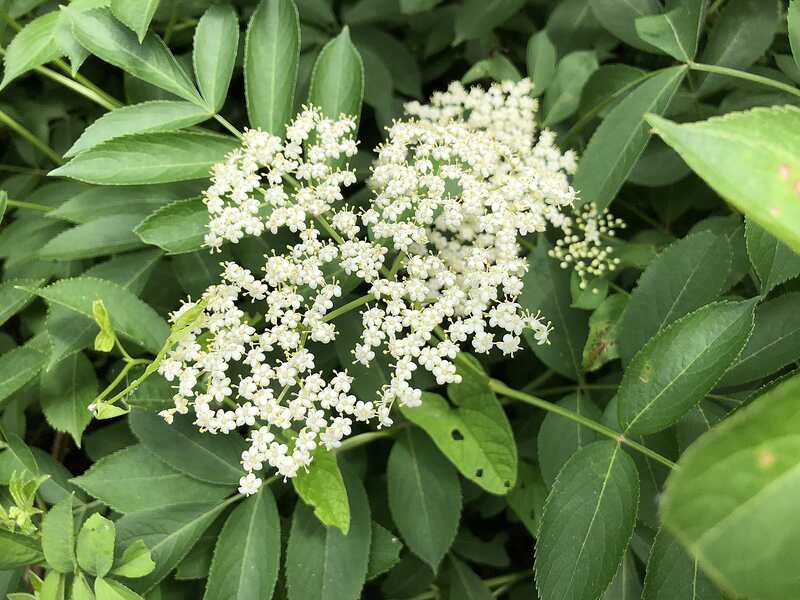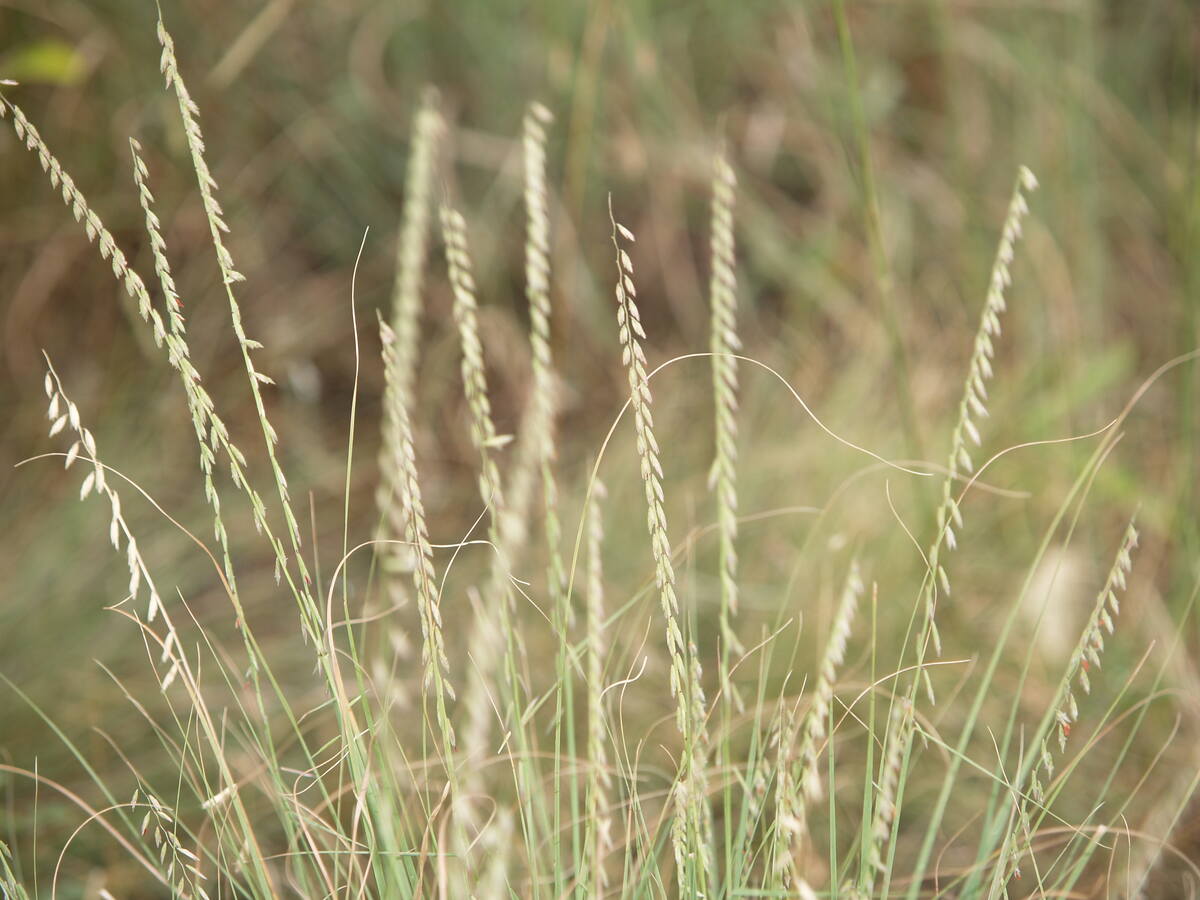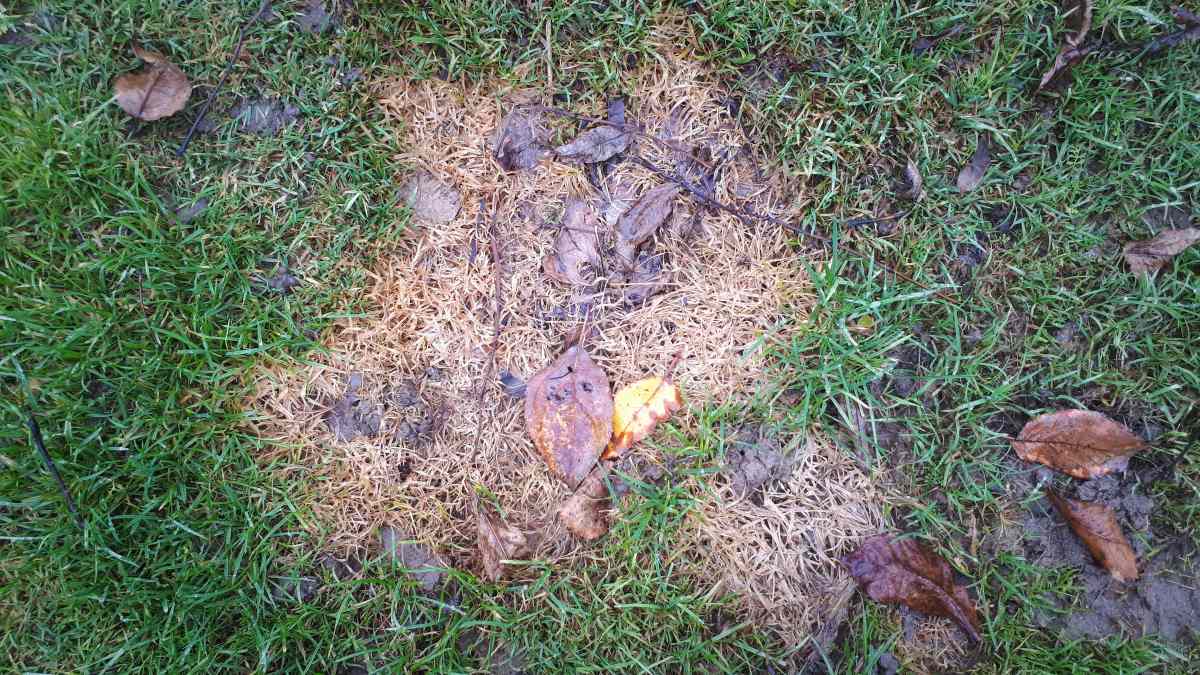
Perhaps you want to freshen the garden at your Ohio home or replace damaged trees or shrubs with low-maintenance plants. Then consider plants native to Ohio. They require less attention and also offer ecological benefits. Our guide to the 10 best Ohio native plants can help you find the perfect trees, flowers, and shrubs for your yard.
What Are Native Plants?
Simply put, native plants are trees, flowers, grasses, shrubs, or other plants that have naturally evolved in a particular region. Plants considered to be native to North America are those that were on the continent before European settlers arrived.
So, why use native plant materials? Using native plants in an area helps the environment in many ways:
- They provide food and shelter for native species of butterflies, birds, and other insects and animals.
- They are better adapted to the ecosystem’s climate and soils, so they may need less water or mowing and are more resistant to pests.
- They usually have deeper root systems, so they can manage rainwater runoff and stabilize the soil to prevent erosion.
If you’d like to add a few native flowers, shrubs, or trees to your Ohio home’s landscape, consider one or more of these 10 Ohio native plants:
Ohio Native Flowering Plants
Black-Eyed Susan (Rudbeckia hirta)

These quick-growing flowers provide low-maintenance beauty to your garden and home. They are drought-resistant and prolifically reseed themselves. However, black-eyed Susans need plenty of space, or they will crowd out other plants. Divide the bunches every three or four years to prevent their spread and maintain their health.
- Plant type: Flower
- USDA Hardiness Zone: 3 to 9
- Sun: Full sun
- Soil: Clay, sand, loam, acidic, moist, well-drained
- Duration: Depending on growing conditions can act as a biennial, annual, or short-lived perennial
- Fragrance: Sweet
- Bloom time: June-October
- Water needs: Medium. It has moderate drought tolerance
- Mature height: 1 to 3 feet.
- Maintenance: Low. Can self-seed freely. Black-eyed Susan can become aggressive if given too perfect an environment and insufficient competition.
Butterfly Milkweed (Asclepias tuberosa)

If you’re looking for a pollinator, butterfly milkweed (also known as butterfly weed) is a good choice. Butterfly milkweed needs little fertilizer, is drought-tolerant, and handles Ohio’s winters. Annual pruning in the spring will encourage flower blooms. Don’t plant in areas that cats, dogs, or horses frequent: Butterfly milkweed is toxic.
- Plant type: Perennial herb
- USDA Hardiness Zone: 3-9
- Sun: Full sun
- Soil: Clay, loam, sand
- Duration: Perennial
- Fragrance: Vanilla
- Bloom time: June-October
- Water needs: Low
- Mature height: 1-2 feet
- Potential hazards: Toxic to dogs, cats, and horses
- Maintenance: Low, but is susceptible to spider mites if stressed by drought.
Blue False Indigo (Baptisia australis)

Also known as blue wild indigo, this member of the bean family makes its own fertilizer by using nitrogen in the air. This native perennial has an extensive root system, which makes it very drought-tolerant. Use caution if you have children or pets: Blue false indigo is toxic.
- Plant type: Upright perennial
- USDA Hardiness Zone: 3-9
- Sun: Full sun
- Soil: Loam, Sand
- Duration: Perennial
- Fragrance: None
- Bloom time: May-June
- Water needs: Low, Average
- Mature height: 3-4 feet
- Potential hazards: Toxic if ingested, but the poison severity is low.
- Maintenance: Low
Cardinal Flower (Lobelia cardinalis)

Want to attract hummingbirds to your garden? Plant cardinal flowers. The birds’ beaks allow them to reach the nectar in the plant’s long flowers. Cardinal flowers need more water during dry spells, but mulch them lightly in the fall: Too much moisture can kill the plants over the winter.
- Plant type: Flower
- USDA Hardiness zones: 3-9
- Sun: Full sun, partial shade
- Soil: Sand, loam, clay, limestone-based
- Duration: Perennial
- Fragrance: None
- Bloom time: July-September
- Water needs: High; be sure to keep moist during dry spells.
- Mature height: 4 feet
- Potential hazards: Toxic if ingested by people, domestic animals, horses.
- Maintenance: Moderately difficult. Susceptible to rust and leaf spot.
Ohio Native Trees
Boxelder Maple (Acer negundo L.)

This member of the maple family will adapt to any type of soil or weather conditions. Boxelder grows quickly but has a lifespan of 30 years or less and is susceptible to insects. This native tree is usually used in windbreaks or as a quick-growing tree to stabilize areas prone to erosion.
- Plant type: Tree
- USDA Hardiness Zone: 3-9
- Sun: Full sun to partial shade
- Soil: Just about any well-drained soil
- Duration: Perennial
- Foliage: Deciduous
- Fragrance: Mild
- Bloom time: March-April
- Water needs: Medium, drought tolerant
- Mature height: 30 feet
- Potential hazards: They are toxic to horses, and some people have an allergic reaction from them. They are susceptible to fungal diseases and attract boxelder bugs.
- Maintenance needs: Be careful not to overwater. They thrive best when the soil’s moisture varies.
Pawpaw (Asimina triloba)

Dark green leaves give the pawpaw tree, which produces Ohio’s native fruit, a tropical look. They like moist, well-drained soil and must be established in the shade, but saplings can take full sun. However, to get a fruit crop, Pawpaws must be cross-pollinated from a genetically different pawpaw tree planted nearby.
- Plant type: Tree
- USDA Hardiness Zone: 5 to 8
- Sun: Full sun, partial shade, full shade
- Soil: Loam
- Duration: Perennial
- Fragrance: Fermenting grapes
- Bloom time: April-May
- Water needs: Average
- Mature height: 15-30 feet
- Potential hazards: Leaves are toxic if ingested. Ingesting the fruit could cause stomach pain for some people.
- Maintenance: Prune congested or damaged shoots
Ohio Buckeye (Aesculus glabra Willdenow)

Ohio’s state tree is known for seeds that resemble a deer’s eye. Plant a buckeye tree in an open area — it can grow to 60 feet. It tolerates cold but buds early, so it’s at risk of early spring frost damage. Buckeye seeds are toxic to humans and animals, so stick with the peanut butter/chocolate confection of the same name.
- Plant type: Tree
- USDA Hardiness Zone: 3 to 7
- Sun: Full sun to partial shade
- Soil: Needs well-drained, slightly acidic, moist soil
- Duration: Perennial
- Fragrance: Leaves have a nasty smell when crushed.
- Bloom time: April-May
- Water needs: medium
- Mature height: Up to 60 feet
- Potential hazards: The nuts, bark, and leaves are toxic to humans and animals.
- Maintenance: Low
Ohio Native Shrubs
American Black Elderberry (Sambucus canadensis)

The fruit of the black elderberry bush attracts bees, birds, and people: Its cooked fruit makes tasty baked goods and wines. This deciduous shrub grows quickly and can crowd out other plants. It should be heavily pruned in winter; cutting to the ground every other year may be necessary.
- Plant type: Shrub
- USDA Hardiness Zone: 3-9
- Sun: Full sun, part shade
- Soil: Tolerates a wide variety of wet to dry soils but prefers rich, moist, slightly acid soil.
- Duration: Perennial
- Fragrance: Sweet
- Bloom time (or season of interest, if it doesn’t bloom): May – July
- Water needs: Medium
- Mature height: 5-12 feet
- Potential hazards: Raw fruit is inedible to people
- Maintenance: Regular pruning to remove suckers from base of plant
Black Chokeberry (Aronia melanocarpa)

Black chokeberry will adapt to any type of soil. In fall, it produces berries that provide food for wildlife into the winter. The berries also can be processed into jams, syrups, and wines. Black chokeberry can be planted as borders and hedges, but it spreads rapidly; trimming the suckers from stems will help control growth.
- Plant type: Shrub
- USDA Hardiness Zone: 3-8
- Sun: Full sun, partial shade
- Soil: Chalk, clay, loam, sand
- Duration: Perennial
- Fragrance: Sweet and musky
- Bloom time: Early spring
- Water needs: Average
- Mature height: 3-8 feet
- Maintenance: Low
Ninebark (Physocarpus opulifolius)

Ninebark attracts both pollinators and wildlife. Its dense growth attracts nesting birds; the white flowers attract bees and butterflies; the seeds provide food for rabbits and birds. Ninebark isn’t fussy about soil or moisture conditions, though it prefers full sun to partial shade. For home lawns, it can serve as a windbreak or as a privacy screen.
- Plant type: Shrub
- USDA Hardiness Zone: 2-8
- Sun: Full sun to partial shade
- Soil: Dry to moist clay and loam soils
- Duration: Perennial
- Fragrance: No fragrance
- Bloom time: Late spring to early summer (May-June)
- Water needs: Low to Medium
- Mature height: 5-8 feet
- Potential hazards: No hazards
- Maintenance: Low
How to Choose Native Plants for Your Ohio Landscape
So, you’re wondering how to choose native plants for your landscape. Before you head to the store or hit the internet, ask yourself: Why do you want native Ohio plants? Do you want low-maintenance, colorful native wildflowers? Want to attract pollinators or wildlife, or grow berries? Your answers will help determine the plants that you buy.
First, Do the Prep Work
Look at the size of your yard and the areas you intend to plant. A small backyard is no place for a buckeye tree that can grow to 60 feet. A small garden can easily be overtaken by black-eyed Susans.
Look at your yard conditions. Full sun? Clay soil? Wetlands? Dry areas? Some native plants will thrive anywhere, while others are more fussy. It may be wise to get a soil test to see if your garden needs extra fertilizer or soil amendments.
Once you have the basics, then it’s time to choose the plants:
Low-Maintenance Ohio Native Plants
Generally, native plants need less water and are more resistant to pests. But some need more care than others. Low-maintenance plants include:
- Black-eyed Susans
- Butterfly milkweed
- Blue false indigo
- Ohio buckeye
- Black chokeberry
- Ninebark
Ohio Native Plants That Attract Pollinators
These plants produce flowers that attract bees, songbirds, and other pollinators to your garden:
- Butterfly milkweed
- Ninebark
- Cardinal flower
- Black elderberry
- Black chokeberry
Ohio Native Plants That Serve as Food Sources
These plants produce seeds or fruit that attract wildlife or provide the ingredients for your next batch of jam:
- Pawpaw
- Black elderberry
- Black chokeberry
- Ninebark (seeds provide winter food for wildlife)
FAQ
Ohio State University says that buckeyes can pick up leaf blotch, a fungal disease that causes brown blotches on the leaves. While it doesn’t kill the tree, the leaves will appear scorched and eventually fall off.
Several native plants are poisonous to people and animals, so use caution when planting. They include:
● Butterfly milkweed (toxic to horses and domestic animals)
● Blue false indigo
● Boxelder (toxic to horses; can cause allergic reactions in humans)
● Pawpaw (leaves)
● Ohio buckeye (nuts, bark, and leaves are toxic to people and animals)
Note: When raw, black elderberry and chokeberry are inedible due to their highly unpleasant taste. Enjoy them when processed as ingredients in jellies, wines, or other foods.
Ninebark’s name comes from its paperlike outer bark, which can be peeled away. Underneath, you’ll find several layers of inner bark ranging in color from reddish to light brown.
There are too many to mention, but here are a few more flowering plants that will help to attract beneficial insects and pollinators to your Ohio lawn:
● Wild geranium (Geranium maculatum)
● Wild bergamot (Monarda fistulosa): Most plants in the Monarda genus are also known as “bee balm.”
● Oswego tea (Monarda didyma)
● Purple coneflower (Echinacea purpurea)
● Blue-stemmed goldenrod (Solidago caesia)
● Swamp milkweed (Asclepias incarnata)
● White trout lily (Erythronium albidum)
When to Call in a Professional
Are you looking for an Ohio landscaping pro near you? We have trusted landscaping pros in Columbus, Dayton, Cleveland, Cincinnati, and many more cities across this Great Lakes state. A local pro can help you find the best native plants for your Ohio garden and keep them thriving all year round.
Sources:
Main Image Credit: Wackybadger / Wikimedia Commons / CC BY-SA 3.0




